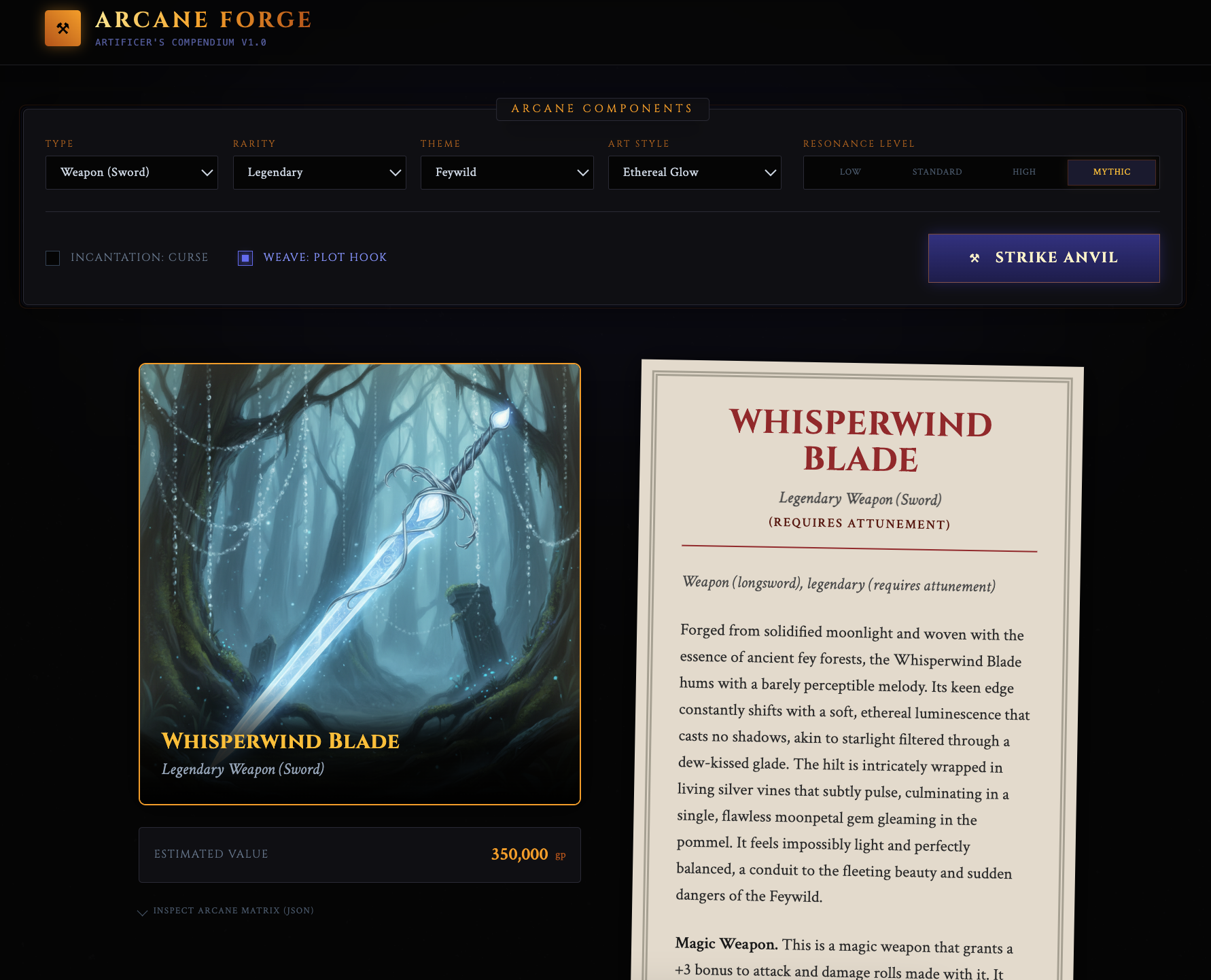I’ve been experimenting with Google AI Studio lately, mostly out of curiosity about how far its “build an app from a prompt” feature can go. I wasn’t planning on making anything serious—just something fun, small, and easy to test. That turned into Arcane Forge, a little tool that generates D&D magic items, complete with lore, mechanics, pricing, and a generated image.
It’s not a big project. It’s not something I planned. It’s something that came together in an afternoon because I wanted to see what AI Studio could do beyond the promotional examples. And honestly, that’s the part I enjoy the most: the quick builds, the experiments that turn into something unexpectedly usable.
You can try it here:
https://arcaneforge.netlify.app
A quick overview of how it works
The entire app started from a single prompt inside Google AI Studio. I told Gemini to generate a magic item based on a few inputs—type, rarity, theme, power level, and art style—and to follow a consistent structure that included description, lore, mechanics, and a price range taken from Xanathar’s Guide to Everything. I also had it produce a short visual prompt for Imagen so the tool could generate an item image that matched the theme.
From there, AI Studio generated a working React + Vite project. It wasn’t perfect, but it handled the scaffolding: components, basic layout, API wiring. I spent most of my time cleaning things up, tightening the prompt, and improving the UX. The more structure I added to the prompt, the more reliable the output became.
The generation flow now works in two steps. The text appears first, and the image comes in a moment later. It feels faster, and it avoids the “everything waits for the image” pause that made the early version feel sluggish.
Here’s a screenshot:

What I learned while building this
I went into this expecting a fun experiment, not a full tool. But a few things surprised me along the way.
The first was how consistent Gemini becomes once you give it a strict output format. Without structure, magic item generation gets weird fast. With structure, the model becomes much more stable, and the output is easy to map into TypeScript without juggling edge cases.
The second was how smooth Imagen is when the prompt is clear. As long as the item description includes material, shape, and magical effect, the result looks like something you’d actually hand to a player at the table.
And finally, the build feature in AI Studio is genuinely useful for prototyping. I didn’t have to set up the project, write boilerplate, or wire the APIs. I could start directly with the fun part—turning the autogenerated baseline into something that actually feels like mine.
Where it goes from here
Arcane Forge is small, but I like it. It solves a silly little problem I run into as a DM, and it opens the door for more tools built the same way. I’d like to explore monster generators, NPC creators, spell books—basically the things I’ve been manually writing for years. If AI Studio can handle the scaffolding and I can handle the polish, there’s a lot of potential for quick builds that feel personal and useful.
Mostly, though, this was a good reminder: sometimes it’s enough to build something small, follow a spark of curiosity, and see where it goes.
